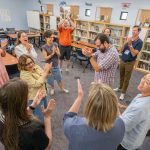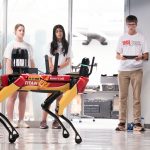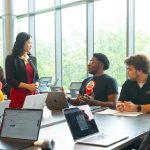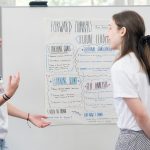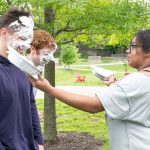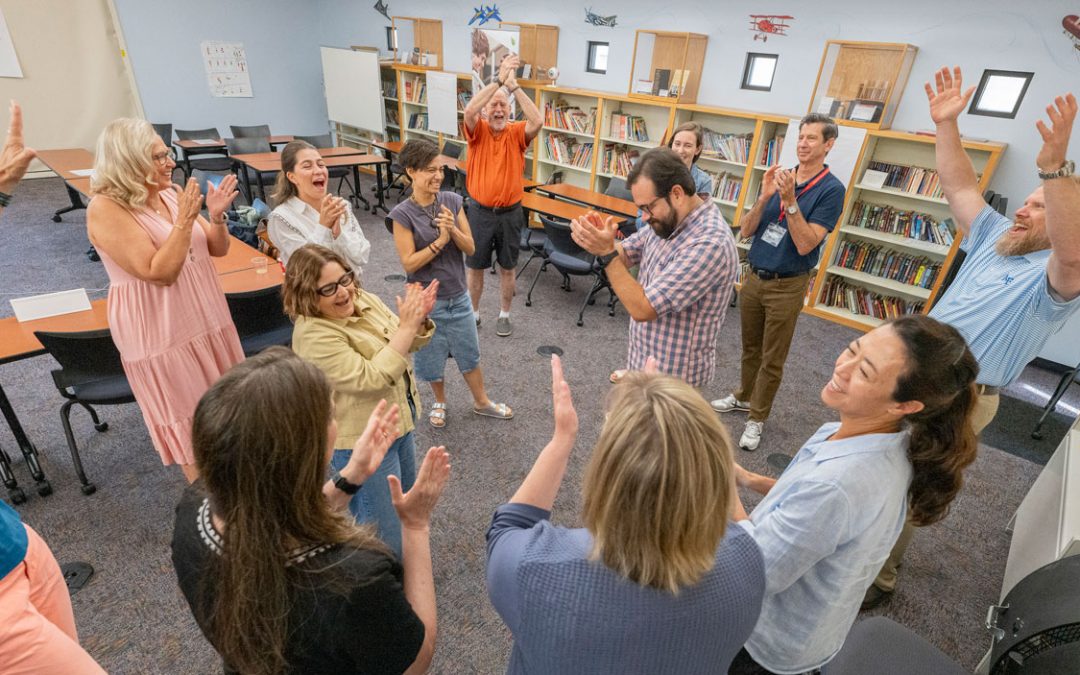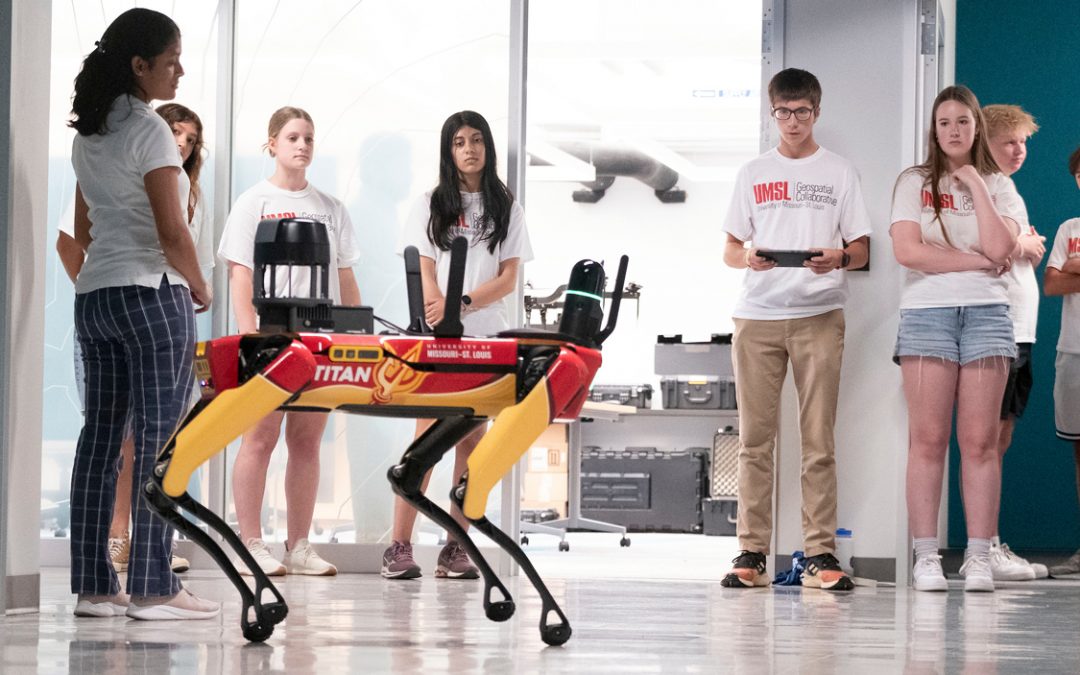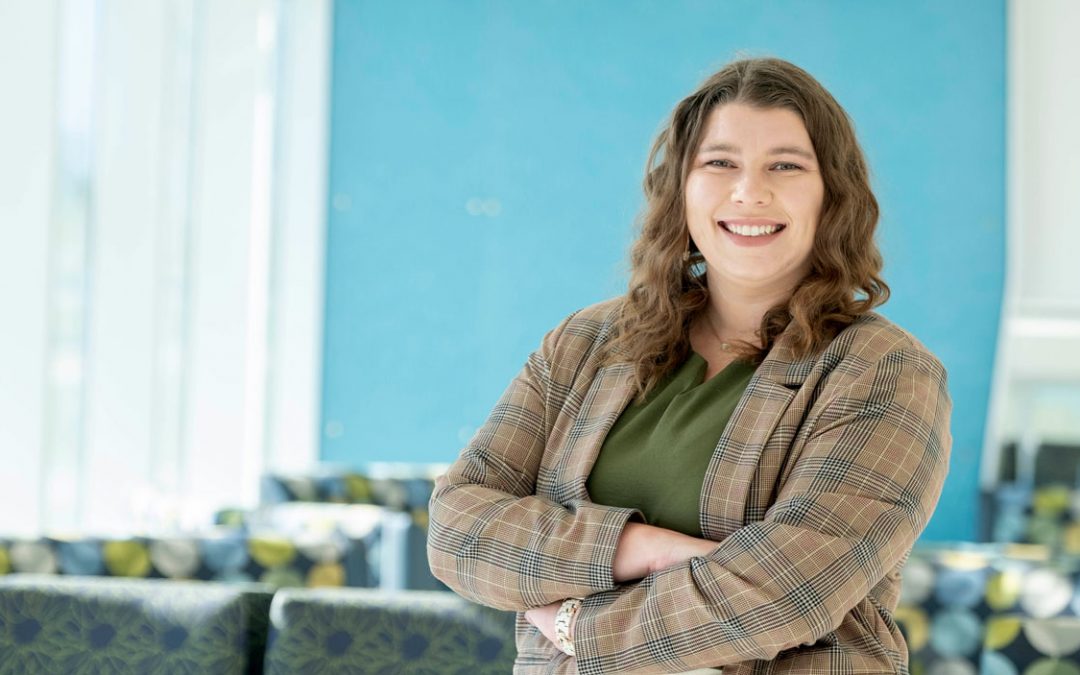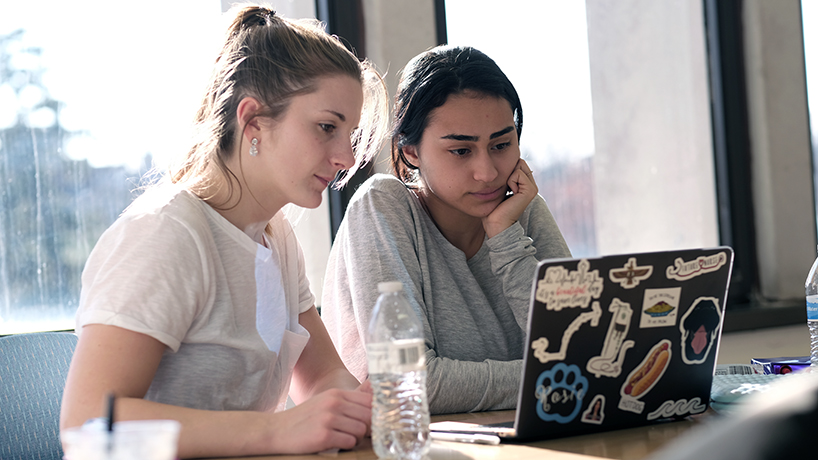
The Center for Teaching and Learning at the University of Missouri–St. Louis has led the transition to remote learning in response to the COVID-19 pandemic. (Photo by August Jennewein)
As awareness of COVID-19’s spread grew in late February, Keeta Holmes noticed that instructional continuity was the featured topic nationally in the teaching and learning community. The director of the University of Missouri–St. Louis Center for Teaching and Learning reached out to Interim Chancellor and Provost Kristin Sobolik to see about the possibility of putting together a resource website in case the university had to move to remote instruction.
Then Holmes and her team got to work.
“We started figuring out how we might need to organize our resources,” she said. “How we would direct faculty and students? What would the initial messaging be to get faculty ready should a decision be made? Then pretty quickly after our website was created, things started happening fast.”
When the message went out on March 9 that faculty should prepare to teach remotely, Holmes and the Center for Teaching and Learning were ready to help. The Keep Teaching and Keep Learning sites that the CTL built in conjunction with the University of Missouri System eLearning instructional designers have provided critical resources to support faculty and students during the pivot to remote learning.
Holmes began the process of building the Keep Teaching site by thinking about what could realistically be done, what tools faculty needed and how to make syllabi adaptations. She was careful to make the distinction between remote teaching versus online learning, which requires a longer period of design than was possible.
“This is designed to keep our community safe but still engaged and most importantly to keep students on track toward degree completion,” Holmes said. “My main concern was helping faculty know that they are supported, and we are here for them.”
Faculty members moving to remote teaching start by looking at their class policies, such as mandatory attendance, accepting late work and considering revisions. Then they make adjustments to activities they had planned including exams and class activities, which might be continuing to meet in real time through Zoom or asynchronous learning through Canvas by adding recorded lectures or discussion boards. The CTL staff and online instructional designers support faculty by listening to how faculty want students to engage with them, the course content and each other. Then the CTL helps them create those experiences in Canvas.
Throughout the process, the Office of eLearning instructional designers have been on hand to help faculty through individual consultations as the CTL and Learning Resource Lab staff led informational sessions on Canvas, Zoom, taping lectures and more. Holmes knew that the CTL, LRL, and Office of eLearning would need to lean on the faculty already teaching online to handle the sudden influx of faculty needing help and added the names of experienced faculty members to the Keep Teaching website as another source of support.
“One triumph has been seeing the community coming together to help each other. I get to be witness to that,” she said. “I’m seeing amazing moments where faculty are helping other faculty. Dean Andrew Kersten, for example, has been scouring the web trying to find great resources that I am then adding to our Keep Learning site. The way that we are all rowing in the same direction has been wonderful to be a part of.”
One faculty member making a difference for his peers is Department of Economics Teaching Professor Michael Allison. Though it had been a few years, Allison had taught online courses before so he had a solid base work from.
“There are more options available,” he said. “It’s a matter of going through those options saying, ‘What’s best for this course? What’s best for that course.’”
Allison examined options such as now-free online textbook resources, using more journal articles and current events, adding video and more, and he shared them with colleagues. He also started thinking about how students would be affected by the pivot, especially in regard to the Sharon G. Levin Economics Resource Center, a tutoring center and lab where students can get help from peers.
Allison has been working to move the resource center online and is thinking about potential technology issues such as having computers and webcams available.
“I think that the main thing is that students have anxieties,” he said. “They have things changing in their lives, whether it be quarantine or kids or changing work schedules. We are trying to be sympathetic and aware that students don’t all have that same technology. We’re trying to roll this out in a soft way.”
His efforts align with the other half of the CTL’s efforts: those aimed at supporting students. Part of that was using existing resources, such as the online Canvas Overview Course, which every UMSL student was enrolled in as soon as the decision was made to move to remote teaching.
Then there is the Keep Learning site.
“Everybody on the teaching and learning listserv was talking about resources for faculty to keep teaching, but we weren’t hearing much about institutions developing a similar site for students,” Holmes said. “We created a Keep Learning site so students would have a place to go to be reassured and outline how they can learn how to learn online. We already have the Canvas course “Online Canvas Overview: Learning to Learn Online,” but we wanted something a little more public that we or faculty could link to in campus messaging to students. Students could immediately say, ‘Oh, this is how I can access the internet for free. This is where I can go for help.’”
When building the resources for students, Holmes and her team thought about how to make every student successful, especially those in vulnerable populations. That includes ensuring courses are set up to support student success, linking students to tutoring and supplemental instruction or minimizing or even removing requirements for proctored testing.
Another part has been making sure students have access to technology to allow them to keep learning by sharing guidance on how to get access to the internet or hardware such as laptops.
“We are committed to keeping students on track toward their degree completion.” Holmes said. “It’s of utmost importance. We know that it’s stressful to move from an in-person learning experience to online, and we’re supporting them together with other academic support units as an entire institution without sacrificing any of the quality UMSL is known for. It is critical for students to finish strong and have a successful semester.”


